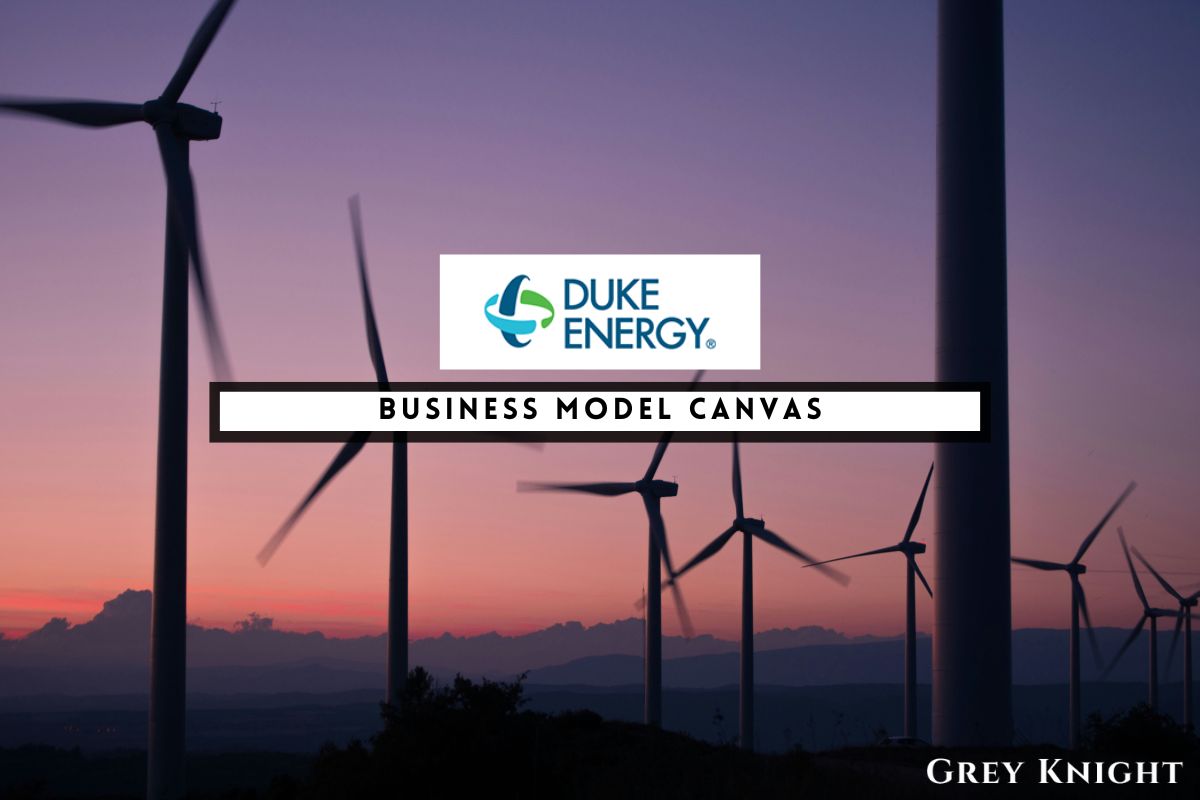Table of Contents
ToggleA Brief History of Duke Energy?
Duke Energy Corporation is an American electric power holding company founded in 1904 by James Buchanan Duke, a prominent figure in the development of the U.S. electric power industry. Originally known as the Duke Power Company, it started as a small company in the Carolinas before expanding to become one of the largest electric power companies in the United States.
Over the years, Duke Energy has grown through a series of mergers and acquisitions. In the 1990s, it acquired companies such as PanEnergy and ScottishPower, expanding its reach to international markets. In 2006, Duke Energy merged with Cinergy Corporation, further solidifying its position as one of the top electric power companies in the country.
Duke Energy has a long history of innovation and technological advancements in the electric power industry. It has been a leader in the development of renewable energy sources and has invested in the construction of solar and wind power projects. The company has also been involved in the construction of nuclear power plants and the development of clean energy technologies.
Today, Duke Energy serves millions of customers in the Southeast and Midwest regions of the United States, providing electric power and natural gas services. It continues to be a major player in the energy industry, with a focus on sustainable and environmentally friendly power generation.
Who Owns Duke Energy?
Duke Energy Corporation, a large electric power company based in Charlotte, North Carolina, is owned by a diverse group of institutional investors and individual shareholders. The company’s top 10 shareholders represent a mix of mutual funds, investment management firms, and pension funds, with the largest being The Vanguard Group, BlackRock Inc., and State Street Corporation. These institutional investors hold significant stakes in Duke Energy and play a key role in shaping the company’s strategic direction and corporate governance. Additionally, a sizable portion of the company’s ownership is also held by individual retail investors who have a stake in Duke Energy’s performance and success. As a publicly traded company, Duke Energy’s ownership is dispersed across a wide range of shareholders, with no single entity holding a majority stake.
Duke Energy Mission Statement
Duke Energy Corporation’s mission statement is to provide clean, reliable, and affordable energy to their customers. They strive to be a leader in sustainable energy solutions, while also fostering a culture of safety, diversity, and accountability. Duke Energy is committed to delivering outstanding service and value to their stakeholders, and to making a positive impact on the communities they serve.

How Duke Energy Makes Money?
Duke Energy Corporation operates as a regulated utility company that primarily generates, transmits, distributes, and sells electricity and natural gas. The company makes money through the sale of electric power and natural gas to residential, commercial, industrial, and wholesale customers. Duke Energy’s revenue stream comes from regulated utility operations, where it earns revenue based on approved rates set by regulatory agencies. Additionally, the company also generates revenue from non-regulated operations, such as commercial renewable energy, power and gas marketing, and natural gas infrastructure investments. Overall, Duke Energy’s business model relies on providing essential energy services to customers while maintaining a reliable and efficient network of power generation and distribution.
Duke Energy Business Model Canvas
The Business Model Canvas is a strategic management tool that provides a visual representation of a company’s business model. It outlines the key elements of a business, including the customer segments it serves, the value it offers, the channels through which it delivers its products or services, and the key activities and resources required to operate the business. The canvas also includes information on the customer relationships, revenue streams, key partners, and cost structure of the business.
Customer Segments:
– Duke Energy serves a wide range of customer segments, including residential, commercial, and industrial customers.
– The company also caters to government entities and other utilities that require energy services.
– Duke Energy has a diverse customer base that spans across various geographic regions.
Value Propositions:
– Duke Energy’s value proposition is centered around providing reliable and sustainable energy solutions to its customers.
– The company offers a range of energy products and services that are designed to meet the unique needs of different customer segments.
– Duke Energy also emphasizes its commitment to environmental sustainability and renewable energy solutions.
Channels:
– Duke Energy uses a multi-channel approach to deliver its products and services, including direct sales, online customer portals, and partnerships with third-party distributors.
– The company also utilizes traditional marketing channels, such as advertising and public relations, to reach its target customers.
– Duke Energy leverages technology to provide digital and mobile communication channels for its customers.
Customer Relationships:
– Duke Energy places a strong emphasis on building long-term relationships with its customers through personalized service and support.
– The company offers customer education programs and initiatives to promote energy conservation and efficiency.
– Duke Energy provides responsive customer service through various communication channels, including phone, email, and social media.
Revenue Streams:
– Duke Energy generates revenue primarily through the sale of energy products and services to its customers.
– The company also earns revenue from regulated utility operations, including electricity generation, transmission, and distribution.
– Duke Energy may also derive revenue from value-added services, such as energy management and consulting.
Key Resources:
– Duke Energy’s key resources include its energy generation facilities, transmission and distribution infrastructure, and workforce.
– The company also relies on technology and data to support its operations and customer service initiatives.
– Duke Energy’s brand and reputation are important resources for maintaining customer trust and loyalty
Key Activities:
– Duke Energy’s key activities include energy generation, grid management, and customer service operations.
– The company also engages in research and development to drive innovation in energy technologies and sustainability practices.
– Duke Energy may also be involved in regulatory and policy advocacy activities to support its business interests.
Key Partners:
– Duke Energy partners with other energy companies, technology vendors, and industry organizations to support its operations and strategic initiatives.
– The company also collaborates with government agencies and regulatory bodies to ensure compliance with industry standards and regulations.
– Duke Energy may have strategic partnerships with renewable energy providers and other stakeholders in the sustainable energy sector.
Cost Structure:
– Duke Energy’s cost structure includes expenses related to energy production, distribution, and customer service operations.
– The company also incurs costs for infrastructure maintenance, workforce management, and technology investments.
– Duke Energy may also allocate resources for regulatory compliance and environmental sustainability initiatives.
Duke Energy’s Competitors
Duke Energy Corporation operates in a competitive market with several other major players in the energy industry. Some of its top competitors include NextEra Energy, Inc., Southern Company, Dominion Energy, Inc., American Electric Power Company, Inc., and Exelon Corporation. These companies are also significant players in the energy sector and compete with Duke Energy in providing electricity and utility services to customers across the United States. Each of these companies has its own strengths and capabilities that make them formidable competitors in the industry.
Duke EnergySWOT Analysis
Strengths:
1. Diverse energy portfolio including natural gas, nuclear, and renewable sources
2. Strong brand recognition and market presence
3. Industry-leading safety record
4. Robust customer base and distribution network
Weaknesses:
1. Dependence on non-renewable energy sources
2. Vulnerability to regulatory changes and environmental policies
3. Potential for large-scale infrastructure investments
Opportunities:
1. Expansion of renewable energy portfolio
2. Growing demand for clean energy solutions
3. Mergers and acquisitions in the energy sector
Threats:
1. Intense competition in the energy market
2. Volatility of energy prices
3. Increasing scrutiny of environmental impact and sustainability efforts
4. Potential for natural disasters impacting infrastructure.
Concluding Analysis
In summary, Duke Energy Corporation has demonstrated a strong and sustainable business model, leveraging its diversified energy portfolio and commitment to clean energy initiatives. As an analyst, I am optimistic about the future of the business, particularly with the company’s investment in renewable and sustainable energy sources. With a focus on innovation and adaptability, Duke Energy is well positioned to thrive in an evolving energy landscape. I anticipate continued success and growth for the company as it continues to lead the way in the energy sector.
Additional Resources
To keep learning and advancing your career, we highly recommend these additional resources:
Business Model Canvas of The Top 1,000 Largest Companies by Market Cap in 2024
A List of 1000 Venture Capital Firms & Investors with LinkedIn Profiles
Peter Thiel and the 16 Unicorns: The Legacy of Thiel Fellowship












